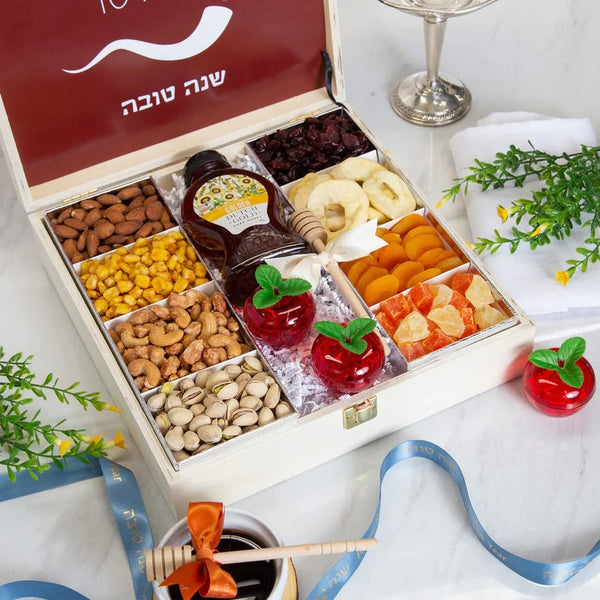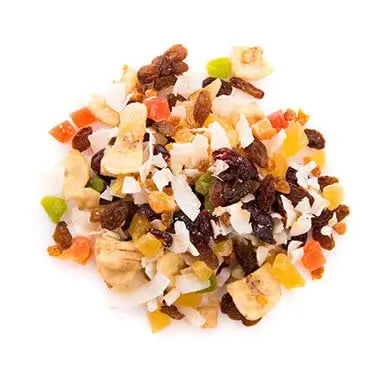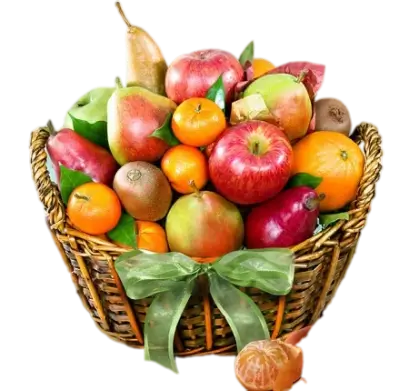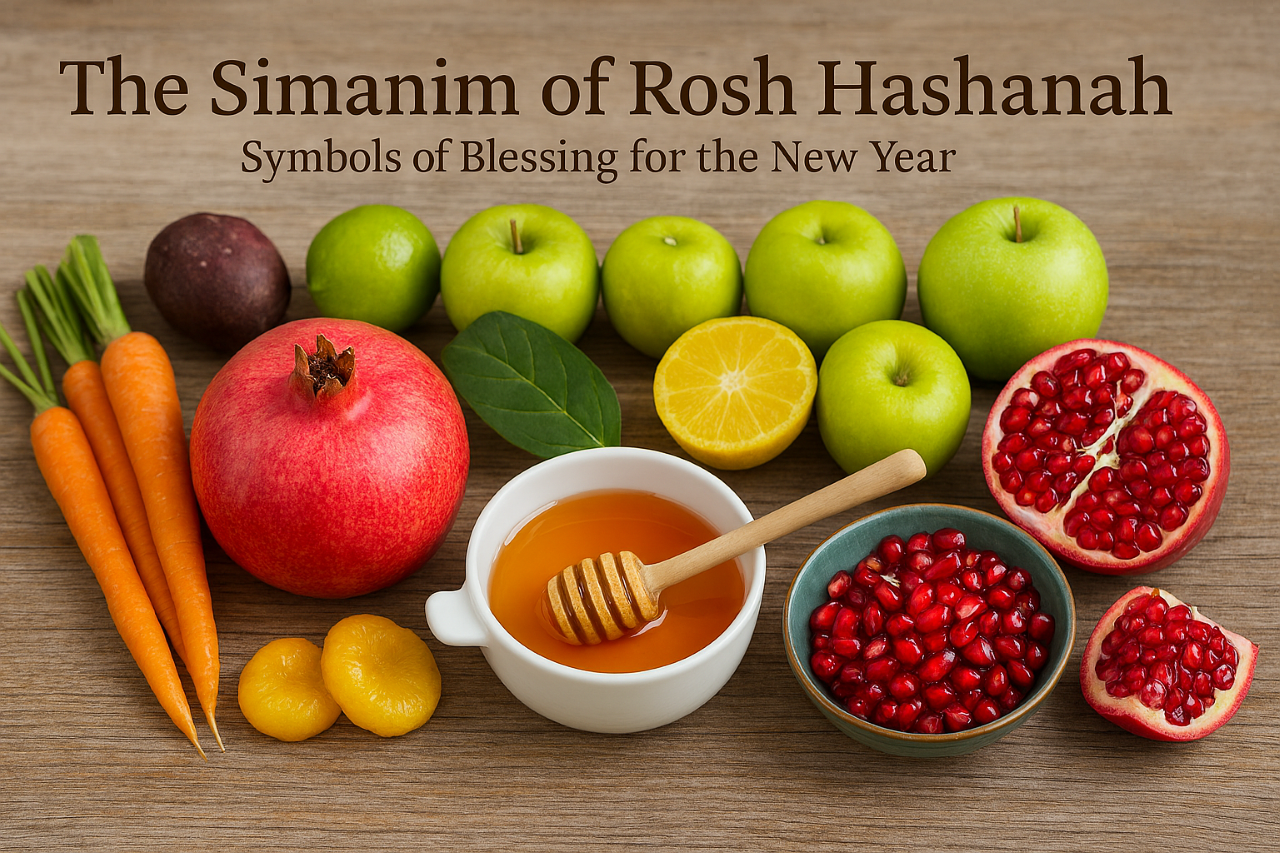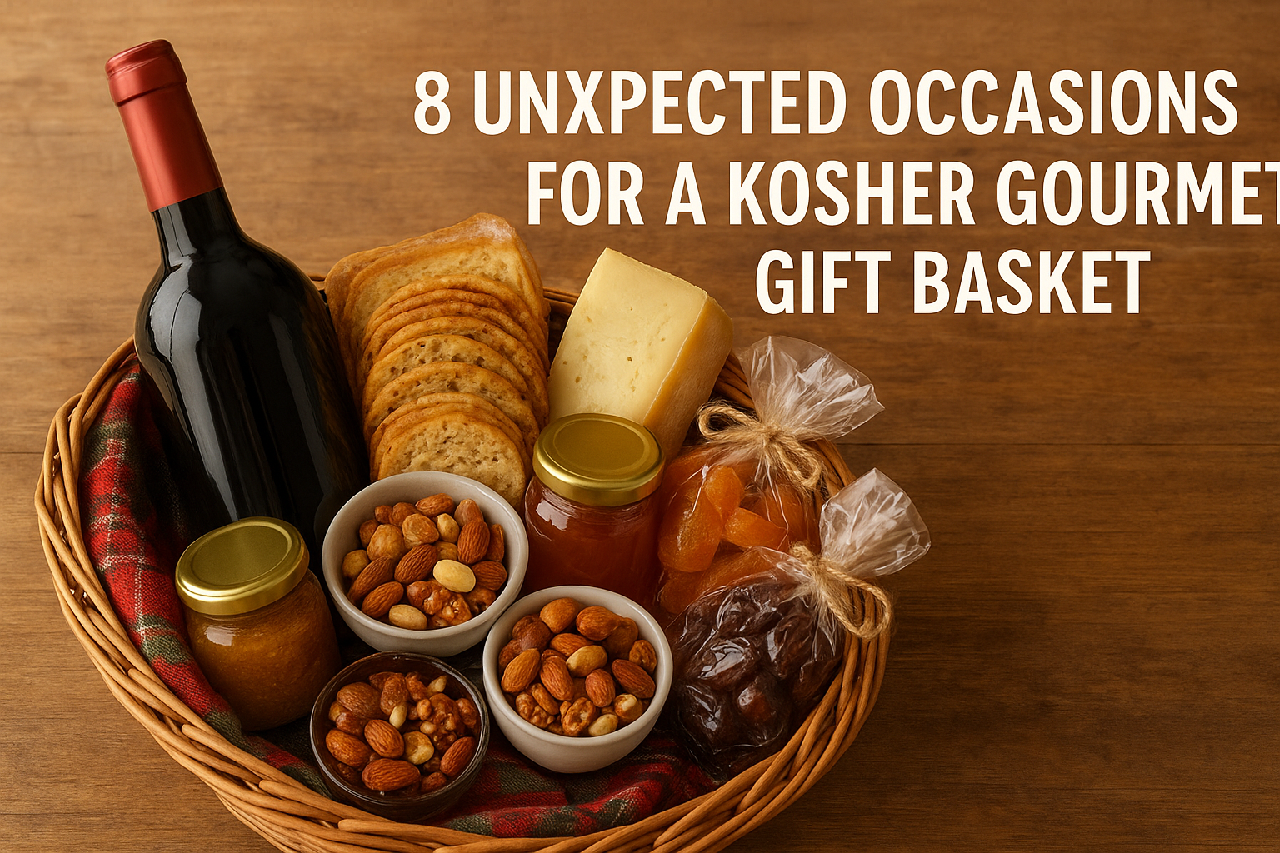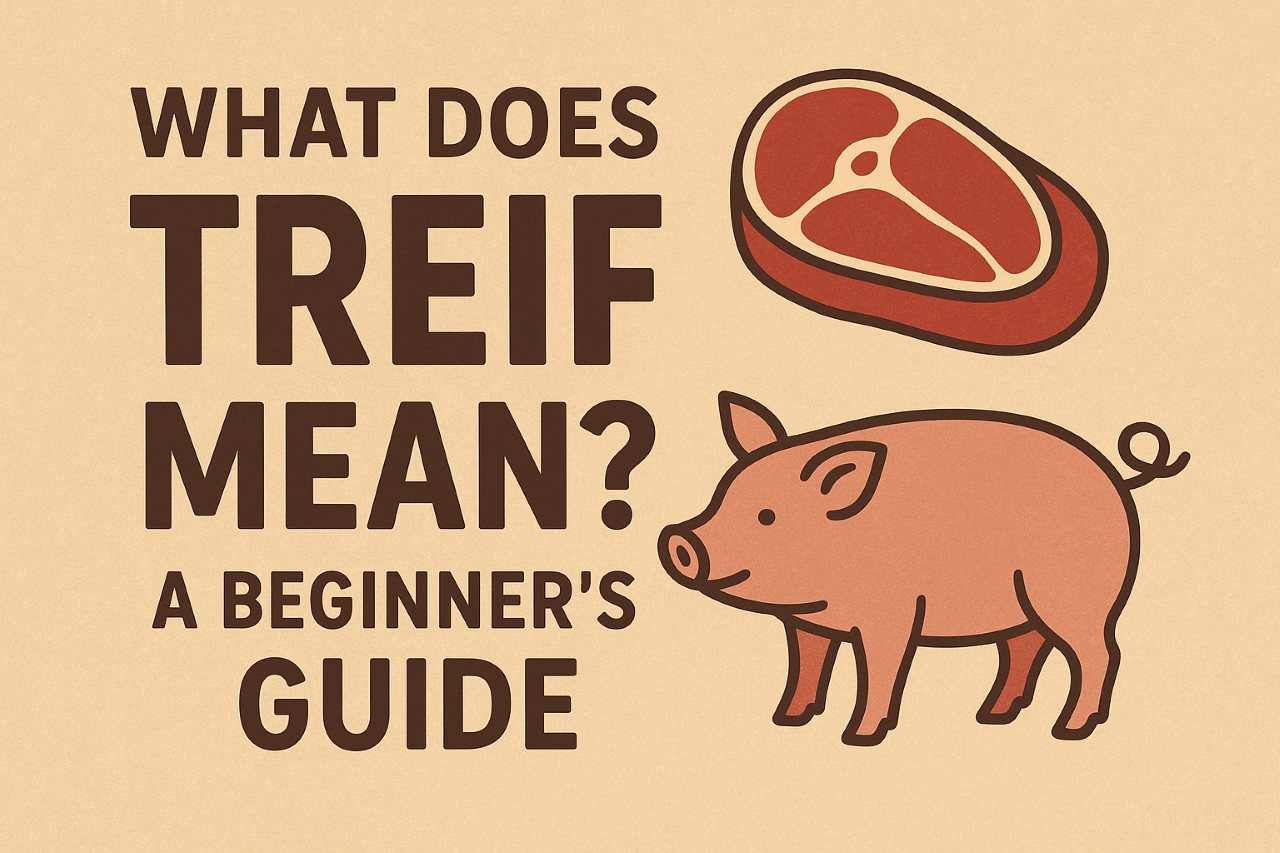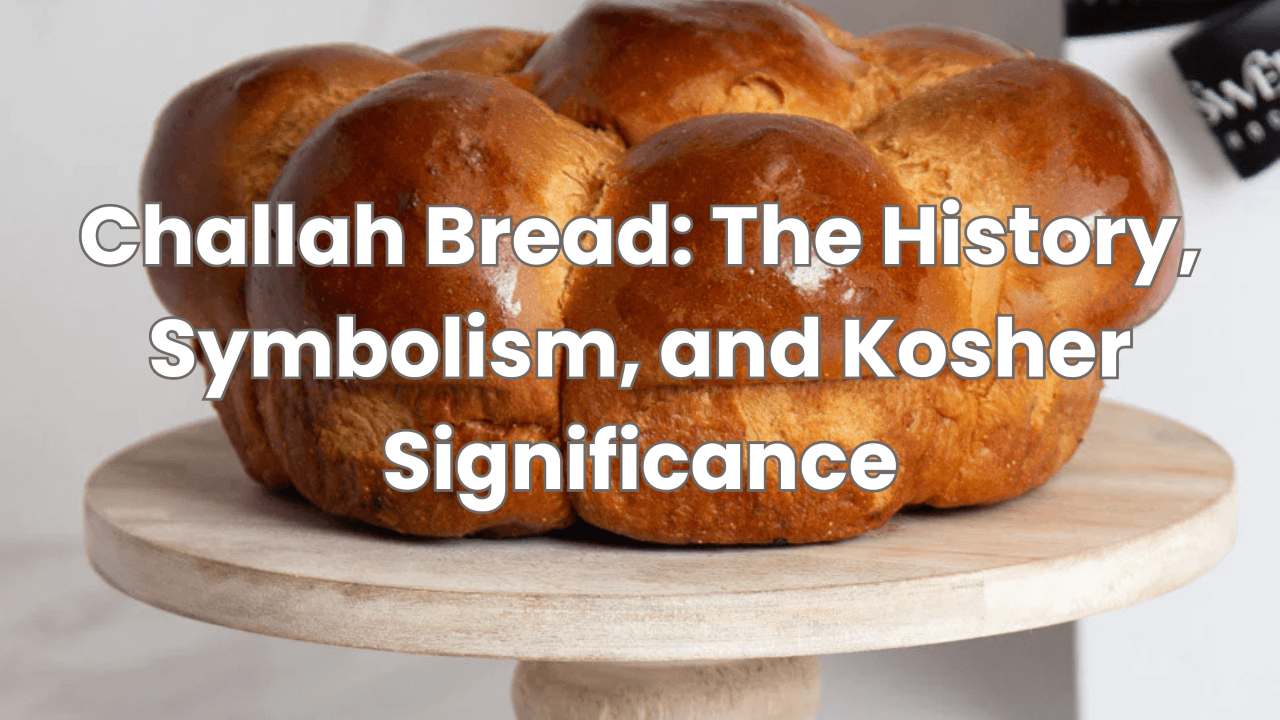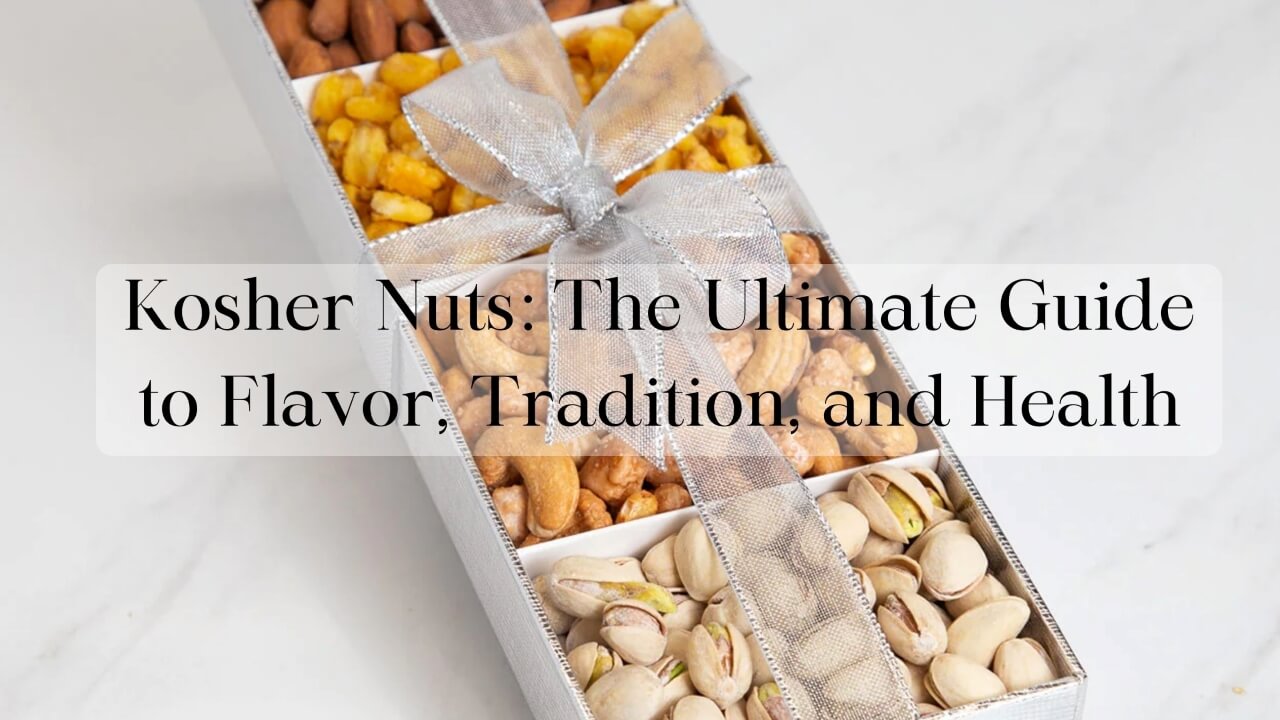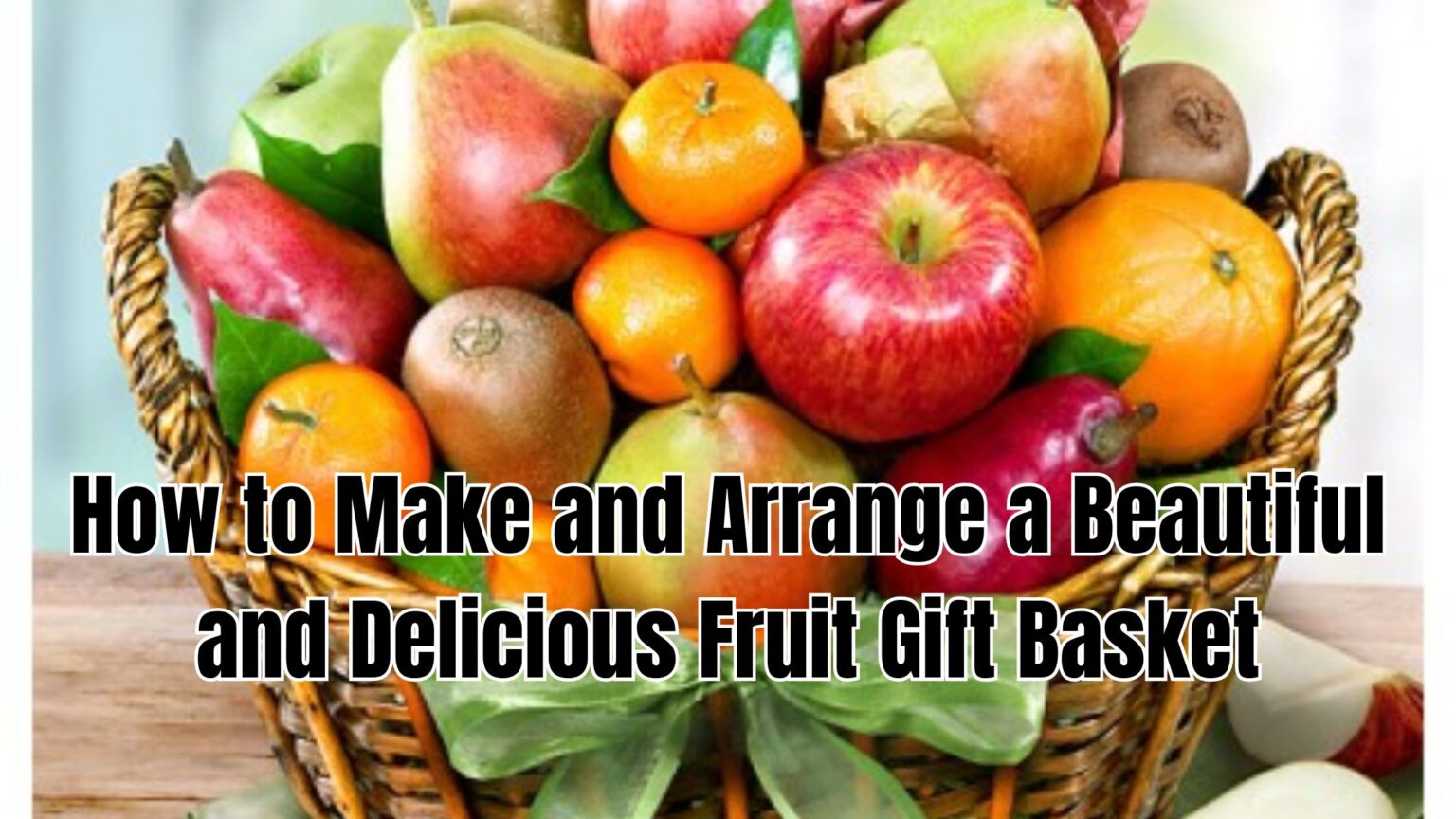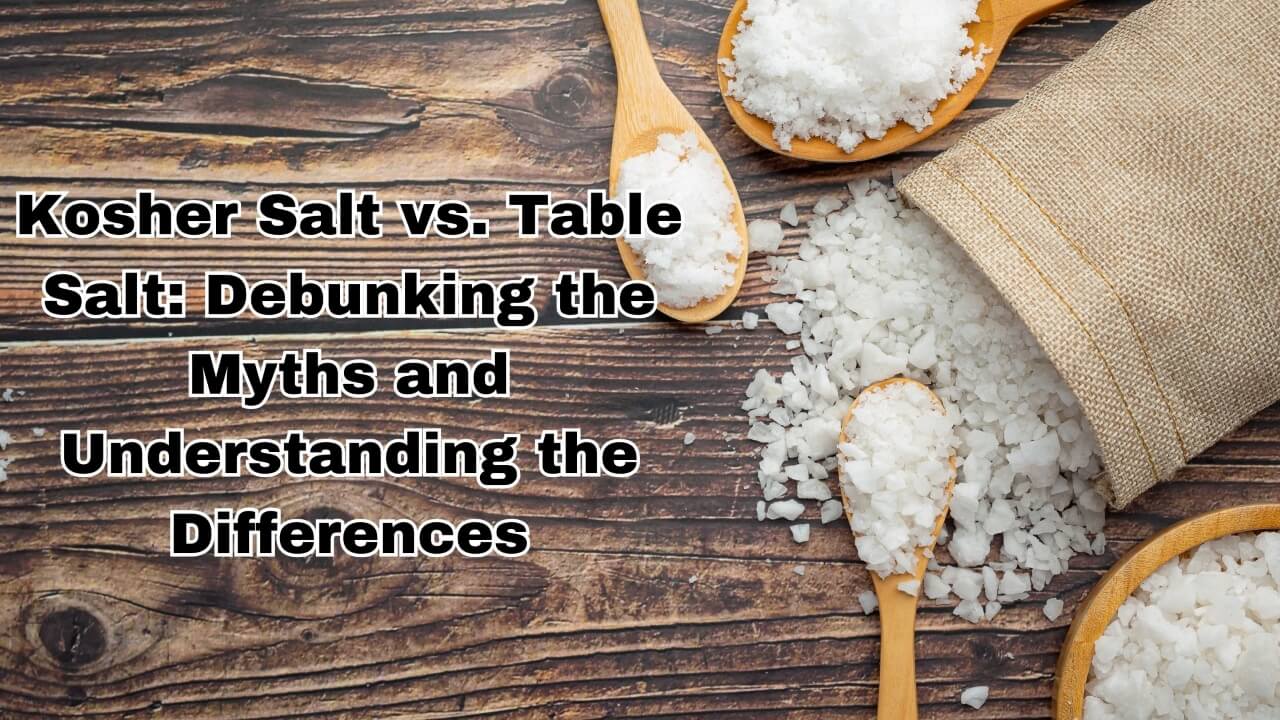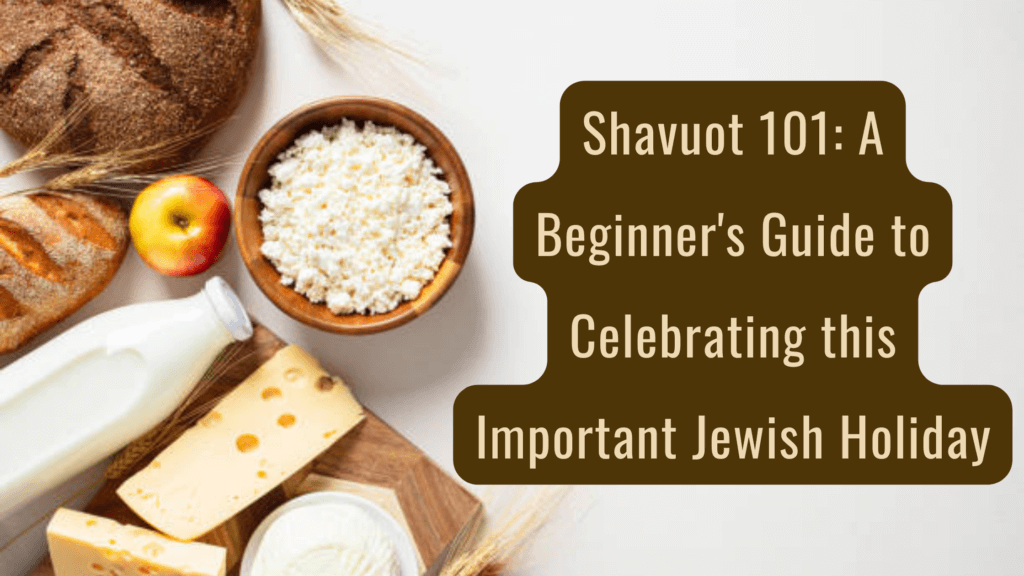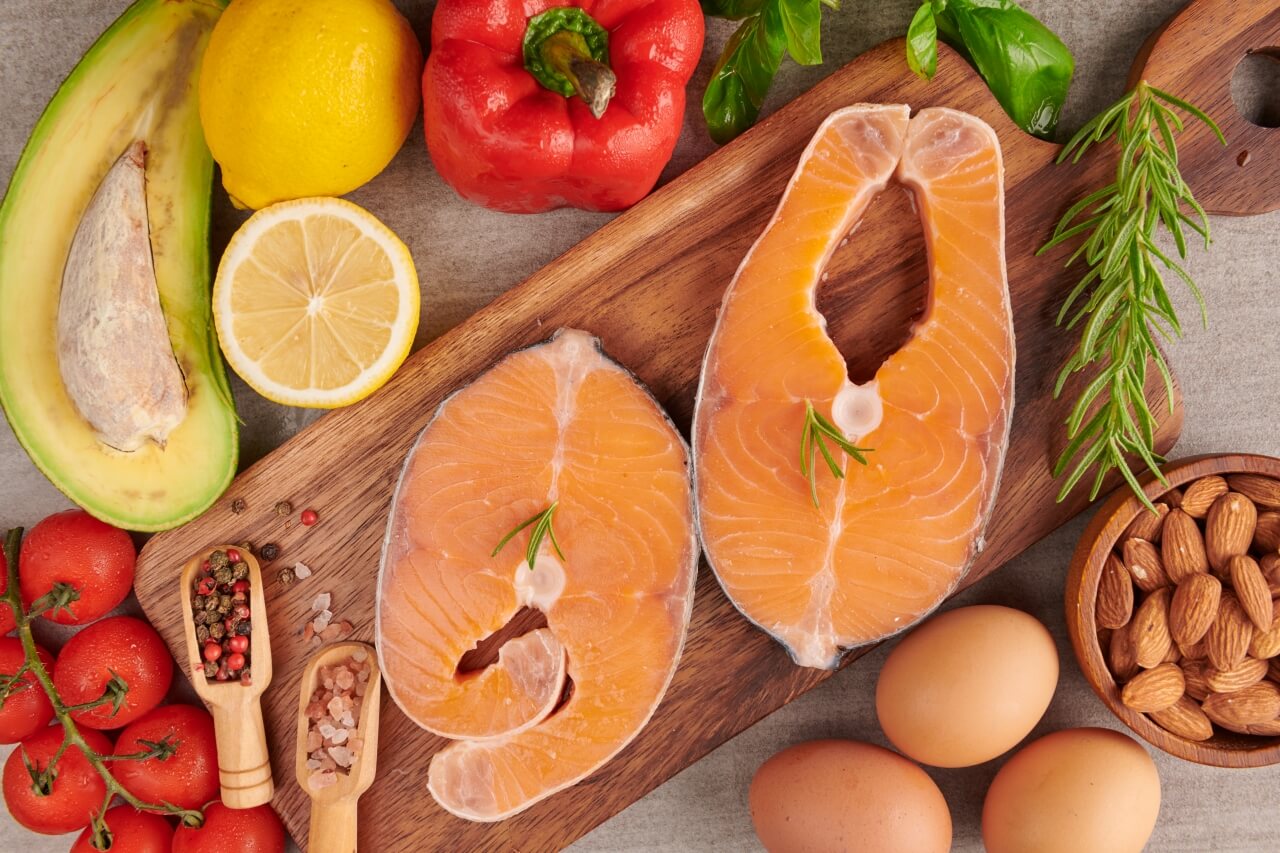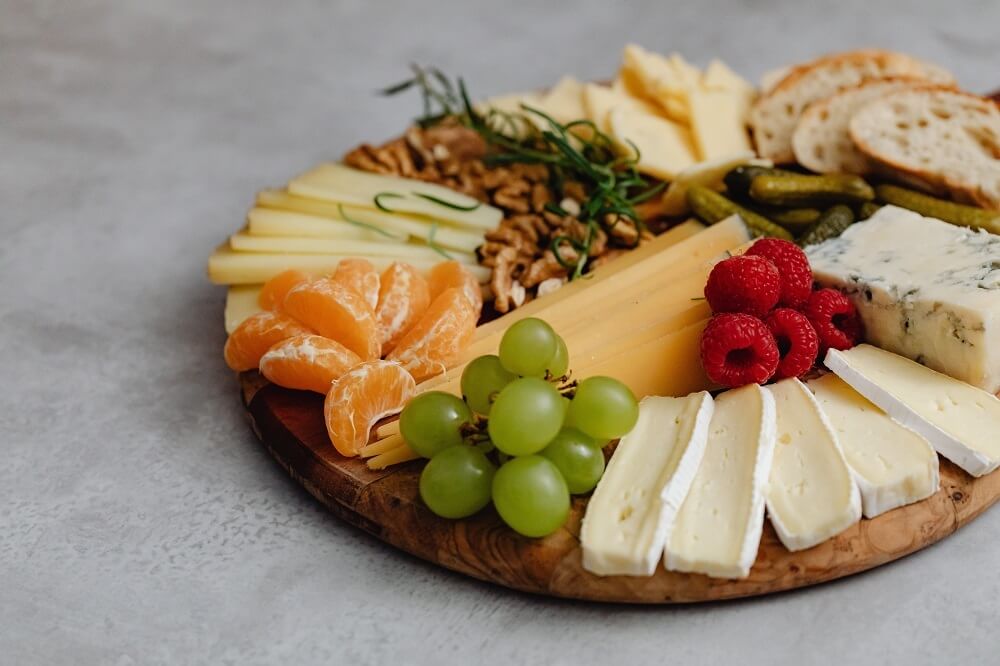On Rosh Hashanah, the Jewish New Year, we gather around the festive table not only to enjoy delicious food but also to bring meaning and prayer into the new year. One of the most beloved customs is eating the simanim (symbolic foods).
Each food carries with it a hopeful blessing, often expressed as a short prayer or pun in Hebrew or Aramaic. Together, they remind us that how we begin the year sets the tone for what follows.
What Are Simanim?
The word simanim means “signs.” On the first nights of Rosh Hashanah, it is customary to eat certain foods as a symbolic “sign” for blessings in the coming year. The practice is rooted in the Talmud (Horayot 12a), where the Sages suggested that eating symbolic foods can influence our fortune.
Over time, Jewish communities around the world developed beautiful traditions around these foods, reciting a short yehi ratzon (“May it be Your will…”) prayer before partaking of each.
Common Simanim and Their Meanings
1. Apples and Honey
Perhaps the most famous siman, we dip apples in honey and ask for a sweet new year. Apples symbolize health and abundance, while honey represents sweetness and blessing that we hope will flow throughout the year.
2. Pomegranate
The pomegranate, filled with hundreds of seeds, symbolizes fruitfulness, abundance, and good deeds. Tradition teaches that a pomegranate has 613 seeds—corresponding to the 613 mitzvot (commandments)—and we pray that our merits will be as plentiful.
3. Carrots (Gezer)
In Yiddish, the word for carrot (meren) sounds like “increase.” In Hebrew, gezer is connected to the word for “decree.” We eat carrots asking that our merits increase and that any harsh decrees against us be annulled.
4. Leeks (Karti)
The Hebrew word karti is related to “to cut off.” We ask that those who wish us harm be cut off, and that only blessing remain in our lives.
5. Beets (Selek)
The word selek resembles the Hebrew for “remove.” We pray that our adversaries and obstacles be removed in the year ahead.
6. Dates (Tamar)
The Hebrew tamar is linked with “end.” We ask that enmity, conflict, and hardship come to an end, and that peace and blessing fill our year.
7. Head of a Fish (or Ram)
Some have the custom to place a head of a fish or lamb on the table. We pray, “May we be as the head and not the tail”—leaders, not followers. The fish also represents abundance and protection from the evil eye, as fish multiply rapidly and live under water, hidden from sight.
8. Squash or Gourd (K’ra)
In Hebrew, k’ra sounds like both “tear” and “proclaim.” We ask that G-d tear up any negative decrees and proclaim only goodness upon us for the coming year.
A Tradition of Hope and Prayer
The simanim are more than symbolic foods; they are reminders of our hopes and values. As we savor each bite, we articulate our prayers—asking not just for material blessing, but for spiritual growth, peace, health, and sweetness in the new year.
Whether you are dipping your apple in honey, counting pomegranate seeds, or sharing new customs with your family, the simanim connect us to centuries of Jewish tradition and the eternal hope for a good year ahead.
May we all be blessed with a Shanah Tovah U’Metukah—a good and sweet new year!




